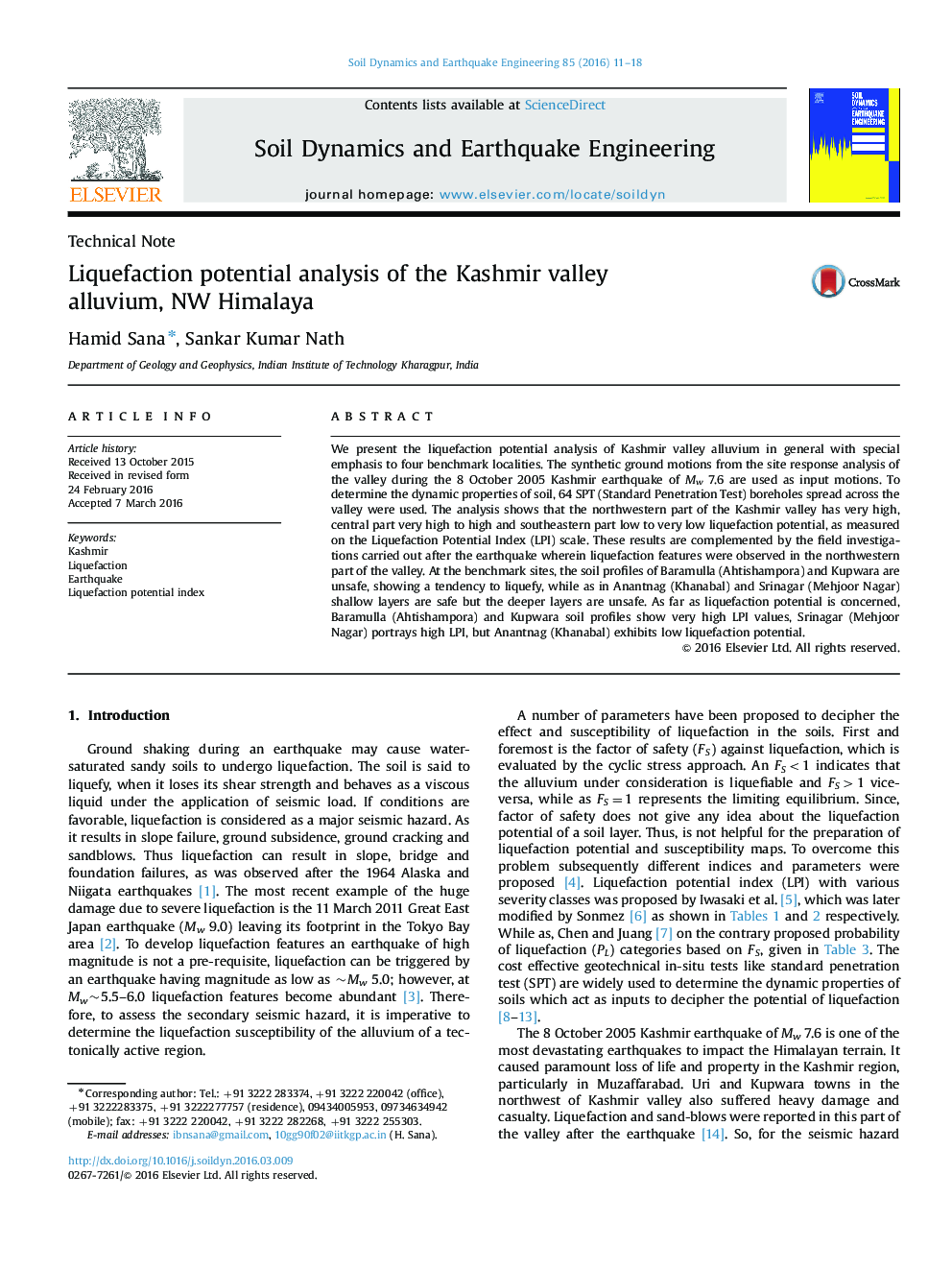| Article ID | Journal | Published Year | Pages | File Type |
|---|---|---|---|---|
| 6771451 | Soil Dynamics and Earthquake Engineering | 2016 | 8 Pages |
Abstract
We present the liquefaction potential analysis of Kashmir valley alluvium in general with special emphasis to four benchmark localities. The synthetic ground motions from the site response analysis of the valley during the 8 October 2005 Kashmir earthquake of Mw 7.6 are used as input motions. To determine the dynamic properties of soil, 64 SPT (Standard Penetration Test) boreholes spread across the valley were used. The analysis shows that the northwestern part of the Kashmir valley has very high, central part very high to high and southeastern part low to very low liquefaction potential, as measured on the Liquefaction Potential Index (LPI) scale. These results are complemented by the field investigations carried out after the earthquake wherein liquefaction features were observed in the northwestern part of the valley. At the benchmark sites, the soil profiles of Baramulla (Ahtishampora) and Kupwara are unsafe, showing a tendency to liquefy, while as in Anantnag (Khanabal) and Srinagar (Mehjoor Nagar) shallow layers are safe but the deeper layers are unsafe. As far as liquefaction potential is concerned, Baramulla (Ahtishampora) and Kupwara soil profiles show very high LPI values, Srinagar (Mehjoor Nagar) portrays high LPI, but Anantnag (Khanabal) exhibits low liquefaction potential.
Related Topics
Physical Sciences and Engineering
Earth and Planetary Sciences
Geotechnical Engineering and Engineering Geology
Authors
Hamid Sana, Sankar Kumar Nath,
